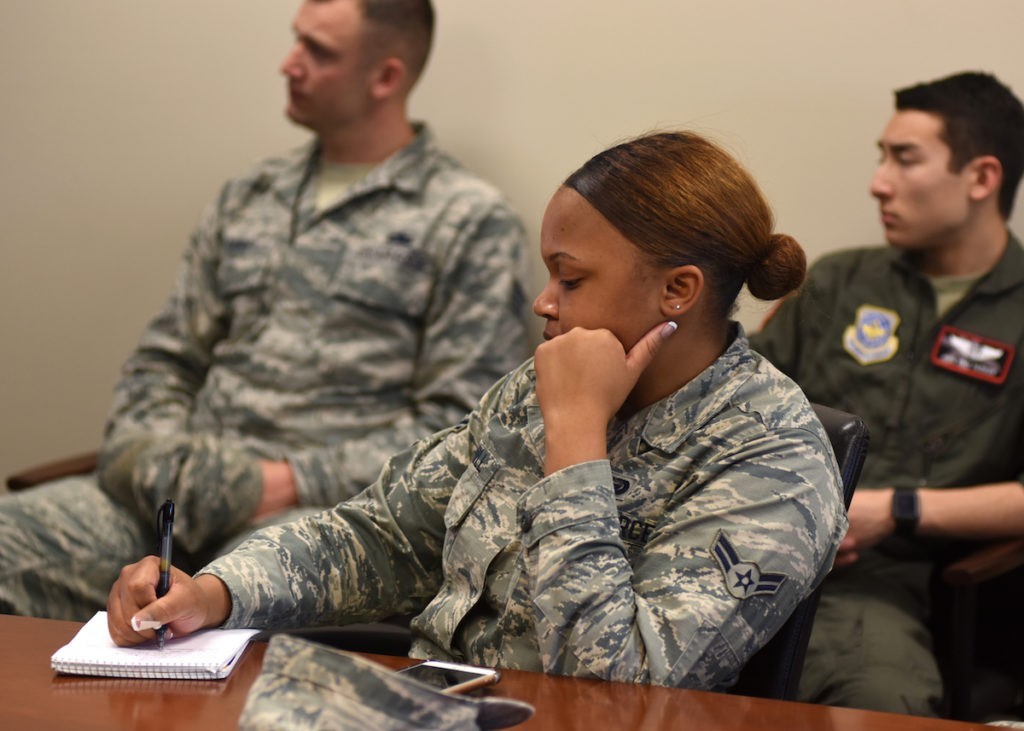Air Force & Space Force Tuition Assistance: What You Need to Know

While serving in the Air Force, one way to pay for off-duty education is to use the Air Force Tuition Assistance program. There are different ways to pay for your schooling while you are in the military, and Tuition Assistance (TA) is one of them. At the time of this writing, members of Space Force also use Air Force TA and the application for Space Force troops is the same as the Air Force version.
According to official sources, “Applications are routed using the Air Force Virtual Education Center online platform. Airmen and Space Professionals may apply for tuition assistance up to 45 days prior to the start of their class date”
Air Force Tuition Assistance Program
Each military branch has a TA program with service-specific criteria. Here is what you need to know about Air Force Tuition Assistance and Space Force Tuition Assistance. Below, we refer to both programs generically as Air Force Tuition Assistance, as this program handles both branches of service at press time.
Who Can Use the Air Force Tuition Assistance Program?
All qualifying Airmen and Guardians can use Tuition Assistance. If you are an officer, you can use TA but you may incur a service obligation following the completion of your course.
RELATED: Air Force Education Programs
What Can You Use Air Force Tuition Assistance For?
Tuition Assistance will pay for:
- Tuition, but not fees, books or other supplies
- Off-duty courses at schools that have been accredited and have signed the Department of Defense Memorandum of Understanding (DoD MOU)
- Specific academic or technical degree programs
- Programs higher than the degree you already have.
- Associate’s degrees, even if you have an associate’s degree from CCAF. This exception allows you to use TA for a civilian associate’s degree.
- Foreign language courses, but only if approved if they are part of a degree or on the approved shortage list.
Tuition Assistance will not pay for:
- Fees, books, or other supplies
- Multiple degrees at the same level.
How Do You Request Tuition Assistance?
Air Force and Space Force TA applications can be completed online through the Air Force Virtual Education Center.
How Much is Tuition Assistance?
The Air Force Tuition Assistance program pays up to $250 per credit hour and $166 per quarter hour.
What Else Do I Need to Know About Air Force Tuition Assistance?
- Your Tuition Assistance funding request must be approved by supervisors through the Air Force Virtual Education Center (AFVEC).
- This must be done within 45 calendar days before, and no later than seven days before the start of the term. If not approved in time, it will be auto-deleted.
- If you have been inactive with your education for a year or more, you will need to receive follow-up counseling from your local education officer before being able to use the TA benefits.
TA will be denied for Airmen and Guardians with:
- UIFs
- A failed PT test
- Referral EPR/OPRs
- If you are on a control roster
If you are serving in the Air Force or Space Force and would like to use Tuition Assistance to pay for all or part of your education, make sure you qualify, and make plans to sign up if you do.
NEXT STEP: Find schools approved for TA funding. Search over 2,100 schools that accept Tuition Assistance in the CollegeRecon School Search tool.
RELATED:
- Military Tuition Assistance Overview
- Air Force Education Programs
- Schools Fully Covered by Tuition Assistance
- Scholarships for Air Force Service Members and Veterans
OTHER TUITION ASSISTANCE PROGRAMS:
- Army Tuition Assistance
- Navy Tuition Assistance
- Marine Corps Tuition Assistance
- Coast Guard Tuition Assistance
- National Guard Tuition Assistance
- Reserve Tuition Assistance
- Colleges Fully Covered by Military Tuition Assistance
About the author
Joe Wallace is a 13-year veteran of the United States Air Force and a former reporter/editor for Air Force Television News and the Pentagon Channel. His freelance work includes contract work for Motorola, VALoans.com, and Credit Karma. He is co-founder of Dim Art House in Springfield, Illinois, and spends his non-writing time as an abstract painter, independent publisher, and occasional filmmaker.

